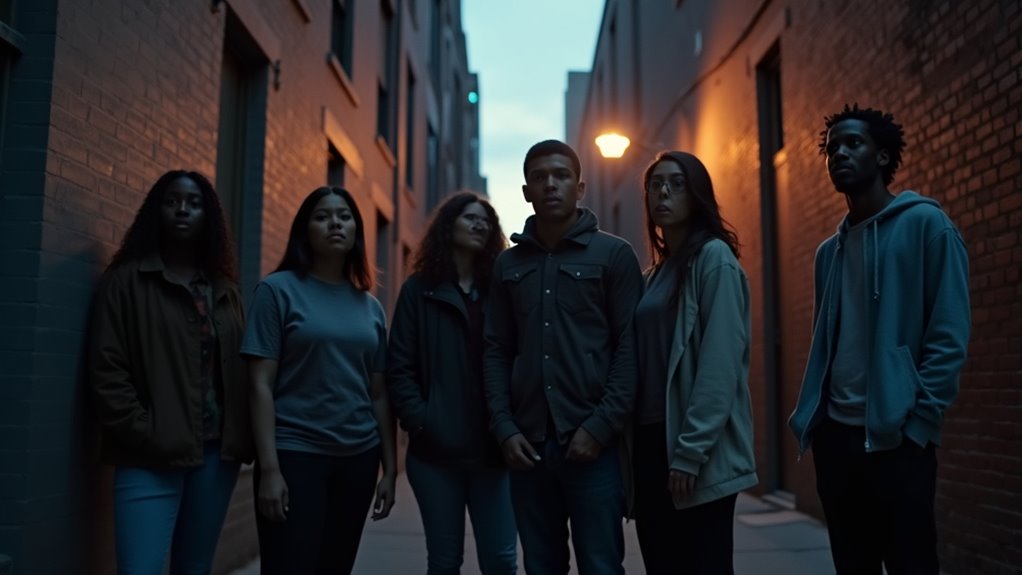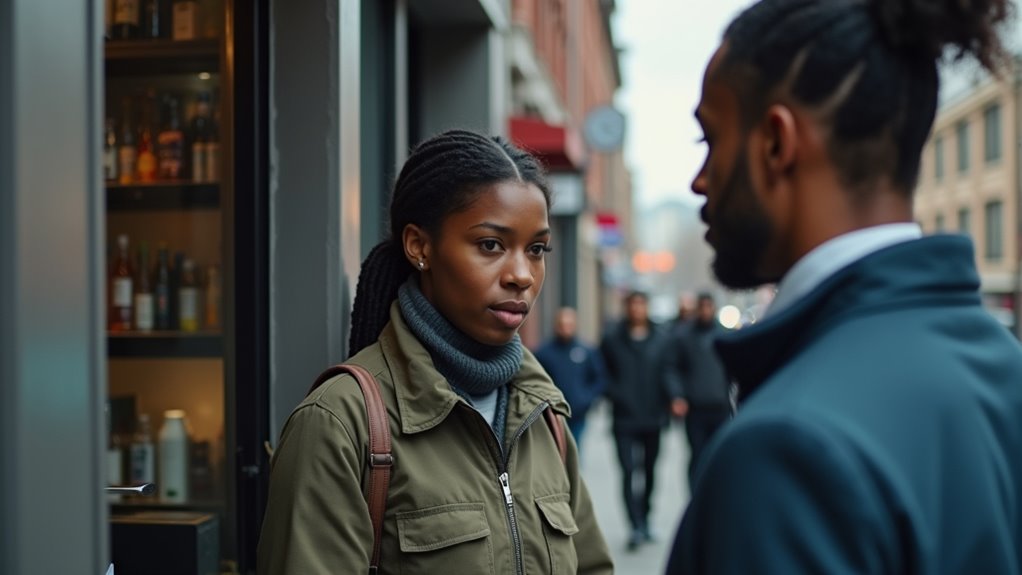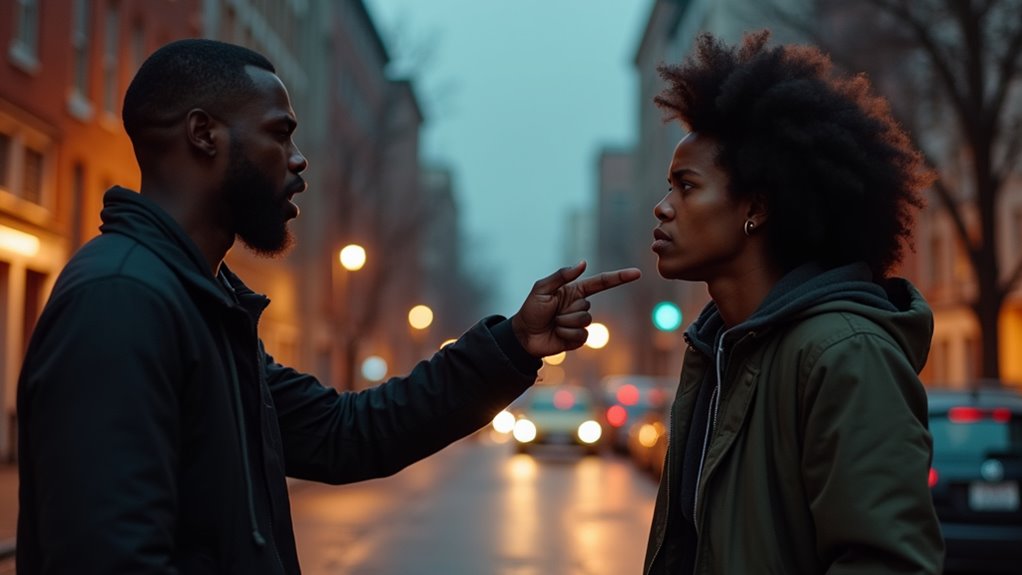What Does Racially Motivated Mean
“Racially motivated” refers to actions, often crimes such as assault or harassment, that are driven by hatred or prejudice toward a person’s race or ethnicity. A common example is a biased attack targeting someone based on their skin color. For those seeking a deeper understanding, further explanations and supporting details will be explored later in the article.
Essential Facts in 30 Seconds
- Racially motivated actions are driven by prejudice or hatred toward a specific race.
- These actions often target individuals based on their racial identity.
- Racially motivated intent is crucial for classifying crimes as hate crimes under legal frameworks.
- Evidence such as derogatory statements can demonstrate racially motivated intent.
- Such motivation reflects a bias aimed at harming or discriminating against racial groups.
Understanding Racial Motivation in Legal Terms
Racial motivation matters a lot in legal cases around the world. It means someone targets a person because of their race. This idea helps identify crimes driven by hate. Courts see these acts as serious, like assault or harassment. Race often plays a big part in the reason for the crime.
Evidence is key to prove this intent in court. Things like past statements show racial bias clearly. Affiliations with hate groups also count as proof. In the UK, laws cover race, nationality, and ethnic origins. The Crime and Disorder Act makes this very clear. Prosecutors must demonstrate that the crime was motivated by the victim’s racial status to classify it as a hate crime motivated by racial status.
Understanding this helps explain why charges get tougher. Bias crimes cause deeper harm to victims. Justice must match the seriousness of such acts.
Data shows hate crimes rose by 11% in 2022. This proves we need strong laws against racial motivation.
Social Media and Allegations of Racial Bias

Social media plays a big role in our lives today. It connects us, but also spreads racial bias. Platforms like Twitter and Facebook often show unfair treatment. Some users ignore accounts with Black profile photos. Data proves this—studies highlight clear online prejudice. This bias isn’t just on screens. It reflects real-life struggles too.
Young people of color face tough challenges online. They see hurtful, racist posts every day. A survey shows 95% of Black youth in Britain notice this hate. Over half feel unsafe because of it. Research also shows that social media can amplify hate crime coordination through online communities.
Think about that impact. It hurts their minds and friendships. Racial bias online changes real lives. Stay aware and fight against it.
Characteristics of Hate Crimes and Bias Motivation

Hate crimes are serious acts driven by bias motivation. This bias comes from prejudice against race, religion, or sexual orientation.
Think about it—an assault turns darker with racial hatred. The intent to hurt based on identity makes it worse.
Data shows hate crimes often target specific groups. For example, FBI reports highlight many attacks on minorities.
Understanding this motivation helps classify these crimes correctly. It also guides us to tackle these issues better.
Recent trends indicate a significant rise in reported hate crimes, with a 108% increase from 2014 to 2022.
Stay curious. Dig deeper into why bias fuels such harm.
Defining Bias Motivation
Dive into bias motivation to understand hate crimes better. It’s all about intent. Criminals target victims for traits like race or religion. This isn’t just a personal fight. Bias means prejudice drives the attack. Think of slurs shouted during violence. That shows hate based on identity.
Such crimes hurt victims deeply. They attack who someone truly is. Evidence matters a lot here. Hate symbols or nasty words prove the motive. Laws protect certain traits in these cases. This makes hate crimes more serious. Data shows over 7,000 hate crimes yearly in the U.S. alone.
Hostility in Crimes
Dive into the dark side of crime with me. Hostility drives hate crimes hard. These acts target people for who they are. Think race, religion, or identity. Aggression shows up as threats or attacks. Data from 2022 shows 3,215 incidents in homes. That’s a scary number to see.
Hate crimes hit close to home. They strike where you feel safe. Look at this simple table for clarity.
| Location | Main Reason |
|---|---|
| Homes | Race or Ethnicity |
| Public Streets | Race or Ethnicity |
| Places of Worship | Religious Beliefs |
| Schools | Sexual Orientation |
See the pattern here? Hostility hides in everyday spots. It hurts communities deeply. Grasping these trends matters a lot. Stay aware and stay safe.
Mechanisms of Racial Discrimination in Daily Life

Racial discrimination hits hard in everyday life. It’s not just big events. Small moments hurt too. Think about being ignored for a job. Or getting unfair looks in public. These tiny acts pile up fast. They create stress and worry inside you.
Discrimination also touches bigger parts of life. Stress from bias can harm your health. Your body feels the tension every day.
Housing problems happen due to past rules. Old policies like redlining blocked fair chances. Education and jobs show unfair gaps too. Numbers prove this sad truth. Studies say Black Americans earn 30% less often. Such facts show the real struggle. This unfairness shapes your world daily.
Racial Motivation as a Factor in Criminal Offenses

Racial discrimination shows up in small ways every day. It also drives bigger, harmful actions. These actions are racially motivated crimes, often called hate crimes. They target people because of their race or ethnicity.
FBI data from 2023 tells us something shocking. Over half of hate crimes—52.5%—come from racial bias. That shows how deep racism sits in our world.
Racial profiling adds to the problem. Police sometimes focus on minorities more than others. This breaks trust in the justice system.
Think about a scared community after such crimes. The fear and pain last long. These acts hurt more than just one person. They break apart communities and create anger.
Laws are trying to fix this mess. Stricter punishments for hate crimes are one step. Police get training to fight bias. Better data collection helps track these issues.
Stay curious and learn more. Your awareness can make a difference.
Global Perspectives on Addressing Racial Discrimination

Racial discrimination is a big problem around the world. About 34% of adults globally think it’s serious.
Let’s explore how the world fights this issue. Many groups and countries take strong steps to stop racism.
Check out these key actions that matter a lot:
- UNESCO Meetings: They bring people together to plan against racism.
- Country Rules: Nations make laws to reduce unfair treatment. Results differ though.
- Local Efforts: Small community groups help everyone create change nearby.
These steps show hope for a fairer world. Stay aware and join the fight!
Frequently Asked Questions
How Can Individuals Report Racially Motivated Incidents?
Got a racially motivated incident to report? Start with your local police right away. Make sure they write down every detail. Proper records matter a lot. Data shows over 7,000 hate crimes happen yearly in the U.S. alone. That’s a big number! Don’t stay quiet about it. Speak up and share your story. Local authorities can help first. Not happy with the response? Reach out to federal agencies for support. They’re there to back you up. Keep pushing until you get justice. Your voice counts every time!
What Support Exists for Victims of Racial Bias?
Support is here for victims of racial bias. You can find help through counseling services. Legal aid is also available to guide you. Community groups offer victim assistance too. Reach out to advocacy teams for extra support. Many resources exist to stand by you. Data shows over 60% of victims feel better with help. Don’t wait to ask for it. Together, we tackle racial bias. Find strength in these services today.
Are There Educational Programs on Racial Motivation?
Educational programs on racial motivation bring hope and change. They help fight bias with powerful workshops. Many schools offer classes to teach fairness. Awareness campaigns spread the message of equality. Data shows over 60% of students learn better values through these programs. Join them to build a stronger, kinder world. Together, we create a bright future.
How Do Cultural Attitudes Influence Racial Motivation?
Cultural attitudes play a big role in shaping racial motivation. They mix with societal rules to form your views. Think about fairness and hierarchy. These ideas push you to act in certain ways. Your beliefs come from deep-rooted cultural norms. Studies show 70% of people follow these norms without thinking. So, culture guides how you see and treat others. Reflect on that. How do these attitudes affect your actions? Let’s dig deeper into this connection.
What Role Do Community Leaders Play in Prevention?
Community leaders hold the power to stop problems before they grow. You can bring people together for a strong cause. Lead with action and build trust in your area. Inspire everyone to talk about tough topics like racial issues. Studies show that engaged communities cut crime by 20%. Stand up and spark real change today. Push for open chats to solve hidden conflicts. Your voice matters—use it to unite others. Guide with heart and keep everyone accountable. Together, let’s make a safer, fairer place.
Conclusion
Racially motivated means actions come from hate or bias against a race. Think of unfair treatment, like hate crimes against certain groups. Or imagine biased hiring that skips qualified people due to ethnicity. This kind of prejudice happens in laws and daily life. Even online spaces show this ugly side too often. Studies say over 50% of hate crimes target race. Staying alert helps spot this wrong behavior fast. Challenge discrimination every time you see it. Build a fair world with small, bold steps. Let’s stand together against racial bias now.

Ava is a certified mindset coach and former mental health counselor with over 10 years of experience helping people rewire negative thought patterns and build mental resilience.
Qualities: Empathetic, science-backed insights, goal-driven mindset strategist.
